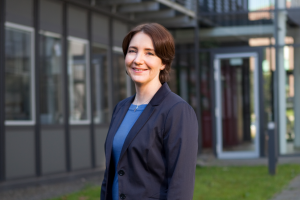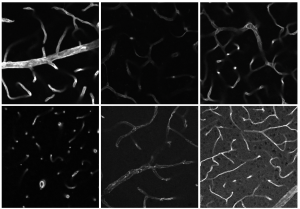Dortmund, 29th September 2021
Coronary artery disease (CAD, also called cardiac ischemia) is the leading cause of death worldwide, according to the World Health Organisation. It occurs when the heart is not supplied with enough blood, and the heart muscle, or myocardium, can no longer be supplied with sufficient oxygen. This results in a sudden, severe blockage of the heart arteries, which can lead, for example, to cardiac arrhythmias or a heart attack.
The Special Research Field (SRF) 1116 ‘Master Switches in Cardiac Ischemia’ of the German Research Foundation (DFG), in which ISAS scientists are also involved, is studying the phase after an acute infarction on the basis of molecular mechanisms. The aim is to find new therapeutic approaches for reducing complications and late effects of heart attacks, such as permanent cardiac insufficiency. ISAS has belonged to the association of 15 research groups from Düsseldorf and Dortmund since November of 2018 (and thus from the beginning of the second four-year funding period).
Insight into the processes occurring after a heart attack
The researchers at ISAS hope to find new therapeutic targets, such as specific metabolic processes or cell functions. The eponymous ‘master switches’ play a crucial role in the recovery process after cardiac ischemia. “Despite numerous studies, the regulation of and mechanisms for various activation triggers of receptors in the heart are still unclear. We have identified a protein that can initiate its own activation mode,” reports Prof Dr Kristina Lorenz. Under her leadership, scientists in the Cardiovascular Pharmacology research group at ISAS are studying the Raf kinase inhibitor protein (RKIP) and its cardioprotective properties. They are investigating how RKIP activates beta-adrenoceptors, which are significantly involved in the muscle function of the heart. The findings from last year’s research can help in the optimisation of known drug target structures and the design of new therapeutic strategies. Consequently, for example, the cardiovascular system could be stabilised with medications after a heart attack in such a way that the contraction force of the heart can be increased despite fewer side effects.
ISAS provides multi-omics techniques
The ISAS Proteomics research group provides the experimental models as well as the mass spectrometry-based technologies for the analysis. For example, the institute is supporting the SFB 1116 project with multi-omics techniques for deciphering disease mechanisms. In 2020, the scientists worked with other researchers to analyse the tissue of mice that had lived under different feeding conditions. They were also able to develop a method for quantifying different forms of CD73, an enzyme that protects the heart from an uncontrolled inflammatory reaction after a heart attack, in human cells. In the fall of 2020, a Liquid Extraction Surface Analysis (LESA™) was also installed at ISAS. This allows a more in-depth mass spectrometric analysis. The researchers hope to use this technique in future to examine tissue after an infarction in order to gain a deeper insight into the mechanisms of cardiac ischemia.
(Cheyenne Peters)

Prof Dr Kristina Lorenz commutes between Dortmund and Würzburg, where she heads the Institute of Pharmacology and Toxicology at the Julius Maximilians University, to conduct her research.
© ISAS / Hannes Woidich







